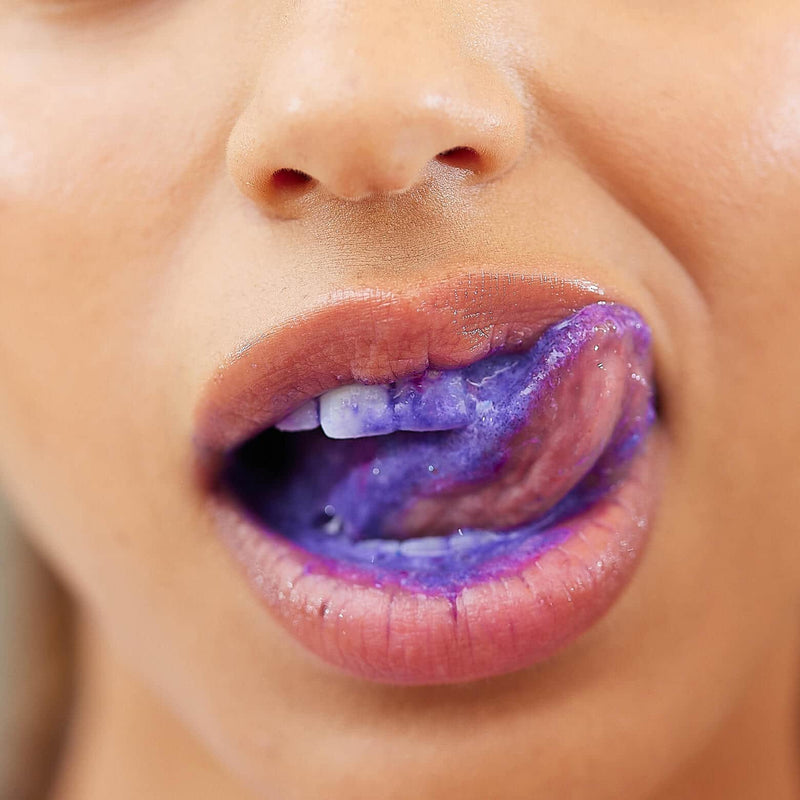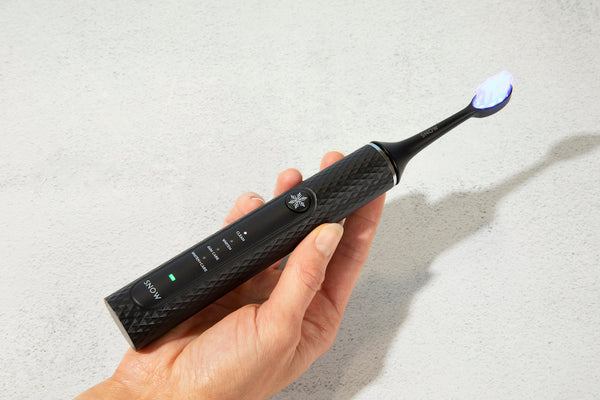Wondering how often to change your toothbrush head? At SNOW, we've got you covered. It's crucial to replace your toothbrush head every three months for optimal oral hygiene.
In this article, we'll delve into the recommended frequency and reasons behind it. We'll explore signs indicating it's time for a replacement and provide tips for maintaining your toothbrush head's effectiveness.
Additionally, we'll address common questions about toothbrush head replacement, ensuring you have all the information needed to maintain a healthy smile.
Let's dive in and discover how simple changes in your oral care routine can make a significant difference in your dental health.
What this article covers:- How Often Should You Change Your Toothbrush Head?
- Why You Need to Replace Your Toothbrush Head
- Signs That You Need to Replace Your Brush Head
- Tips for Maintaining Your Toothbrush Head
- Tips to Help You Remember to Replace Your Toothbrush Head Every 3 Months
- Replacement Toothbrush Head FAQs
How Often Should You Change Your Toothbrush Head?
To maintain optimal oral health, we highly recommend that you replace your toothbrush head every three months. This is super convenient when you use our LED Teeth Whitening Electric Toothbrush and the corresponding Refillable brush heads.
According to WebMD, this frequency is essential for effective plaque removal and to prevent bacterial buildup. Over time, bristles can wear out, reducing their ability to clean effectively, and bacteria can accumulate on the brush head, potentially leading to oral health issues.
Regularly changing your toothbrush head not only ensures a thorough clean but also helps maintain the effectiveness of your oral hygiene routine.
At SNOW, we prioritize your dental health, which is why we emphasize the importance of regular toothbrush head replacement.
By following this simple guideline, you can contribute to a brighter, healthier smile and overall well-being.
Why You Need to Replace Your Toothbrush Head
At SNOW, we understand the importance of maintaining proper oral hygiene, which is why we emphasize the necessity of replacing your toothbrush head regularly.
Let's explore the key reasons behind this crucial practice.
Germs
According to the CDC, toothbrush bristles can accumulate harmful bacteria over time, which can lead to oral infections and decay.
Regularly changing your toothbrush head reduces this risk, ensuring a cleaner brushing experience and promoting oral health.
Wear
Daily use of your toothbrush causes wear and tear on the bristles, diminishing their effectiveness in cleaning teeth and gums.
By replacing your brush head regularly, you can maintain optimal brushing performance, ensuring that you achieve a radiant smile with every brush.
Tear
Friction from brushing can cause the bristles to fray, reducing their ability to reach plaque and debris. By swapping out your toothbrush head on a regular basis, you prevent bristle damage, ensuring thorough cleaning and gum health.
By addressing these factors and replacing your toothbrush head as recommended, you can enhance your at-home teeth whitening routine and contribute to a healthier, brighter smile.
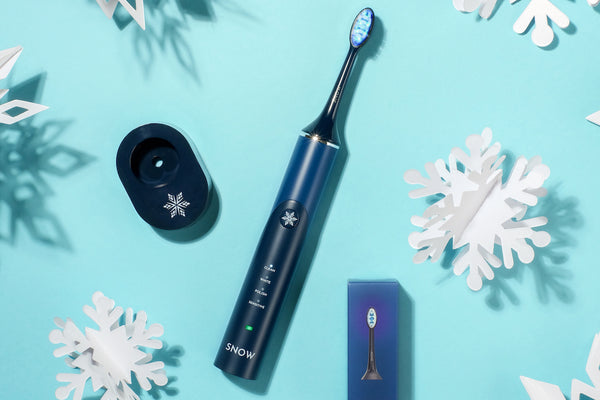
Signs That You Need to Replace Your Brush Head
At SNOW, we prioritize your dental health, which is why we want to highlight the signs indicating it's time to replace your brush head for optimal teeth whitening results.
Worn Or Frayed Bristles
If you notice that the bristles on your toothbrush appear bent, splayed, or frayed, it's a clear indication that it's time for a replacement.
Worn bristles can't effectively remove plaque and debris, compromising the quality of your brushing.
The Colors Are Faded
Fading bristle color is a sign of wear and tear, indicating reduced cleaning efficiency.
When the color fades, it's a visual cue that your brush head may not be as effective in maintaining your oral hygiene and whitening your teeth.
Your Teeth Don't Feel Clean
If your teeth don't feel as clean after brushing as they used to, it could be due to worn bristles that are no longer able to thoroughly clean your teeth.
A fresh brush head ensures a more effective cleaning experience, promoting brighter and whiter teeth.
Your Gums Are Irritated
Frayed bristles can irritate your gums, leading to discomfort and potentially causing oral health issues such as gum disease.
By replacing your brush head, you can prevent gum irritation and maintain your gum health while whitening your teeth at home.
It Smells Bad
Foul odors emanating from your toothbrush indicate bacterial growth, highlighting the need for a replacement.
Keeping your brush head fresh helps prevent bacterial buildup and ensures a hygienic brushing experience.
For the best at-home teeth whitening experience, consider using our LED Teeth Whitening Electric Toothbrush along with our convenient brush head replacements. With SNOW, achieve a brighter smile while prioritizing your oral health.
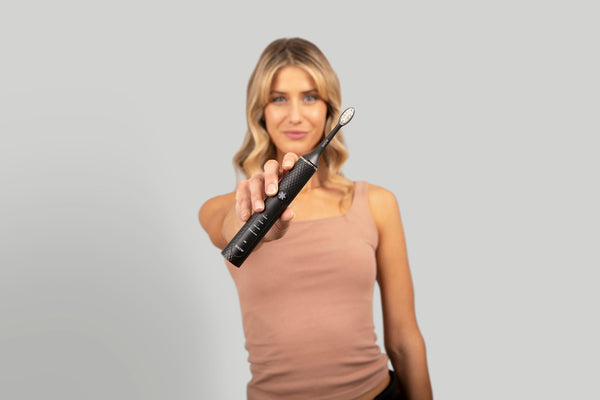
Tips for Maintaining Your Toothbrush Head
At SNOW, we understand the importance of proper toothbrush maintenance for achieving optimal oral hygiene and teeth whitening results.
Here are some essential tips to ensure your toothbrush head stays clean and effective:
Keep Your Toothbrush Clean
After each use, thoroughly rinse your toothbrush under running water to remove any remaining toothpaste and debris. Store it upright in a well-ventilated area to allow it to air dry properly.
This helps prevent the accumulation of bacteria and ensures a hygienic brushing experience.
Store Your Toothbrush Correctly
Proper storage is key to maintaining the cleanliness of your toothbrush. Store it in a toothbrush holder or cup to keep the bristles upright and away from contact with other brushes, minimizing the risk of cross-contamination.
Keep Your Toothbrush To Yourself
Sharing toothbrushes can transfer harmful bacteria and increase the risk of oral infections. Always avoid sharing your toothbrush with others, even family members, to maintain oral hygiene and prevent the spread of germs.
By following these simple yet effective tips, you can ensure that your toothbrush head remains clean, hygienic, and conducive to achieving a brighter, whiter smile with SNOW's at-home teeth whitening solutions.
Tips to Help You Remember to Replace Your Toothbrush Head Every 3 Months
At SNOW, we understand the importance of maintaining a regular toothbrush replacement schedule to ensure effective teeth whitening and oral hygiene.
Here are some catchy and useful tips to help you remember to replace your toothbrush head every three months:
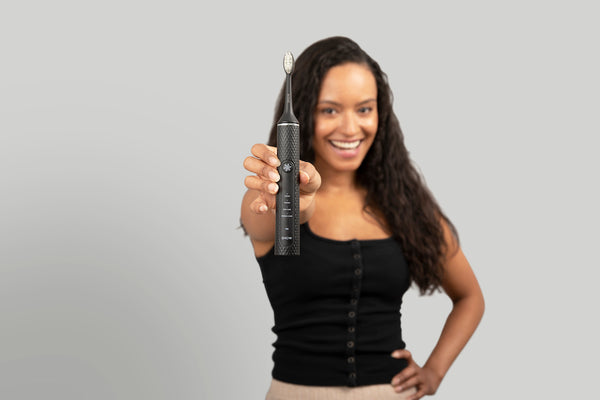
Use Toothbrush Subscription Services
Sign up for SNOW's toothbrush head subscription service that automatically delivers replacement heads to your doorstep every three months.
Services like this take the hassle out of remembering and ensure you always have a fresh toothbrush head on hand.
Associate Replacement With Seasonal Changes
Link toothbrush replacement with seasonal changes, such as the start of a new season or the change of daylight saving time.
Use these transitions as cues to remind yourself to swap out your toothbrush head for a fresh one.
Set Up Visual Reminders
Place a colorful sticker or note near your toothbrush holder or bathroom mirror to visually remind you to replace your toothbrush head every three months.
Visual cues can be effective in reinforcing habits and prompting action when needed.
By incorporating these catchy and useful tips into your routine, you can ensure that you never forget to replace your toothbrush head every three months, promoting optimal oral health and enhancing the results of your at-home teeth whitening efforts.
Replacement Toothbrush Head FAQs
How do I know my toothbrush needs replacing?
Replace your toothbrush head every three months or sooner if bristles show signs of wear or if you've been sick to prevent reinfection.
Why do I need to change my toothbrush at least every three months?
Regular replacement maintains optimal cleaning efficiency and prevents bacterial buildup, promoting oral health.
How often should you sanitize your toothbrush?
Sanitize your toothbrush weekly by soaking it in mouthwash or a mixture of water and hydrogen peroxide for five minutes.
What happens if you don't change your toothbrush for a year?
Failure to replace your toothbrush can lead to increased bacterial contamination, potentially causing oral infections and decay.
Conclusion
Amidst daily routines, remembering to swap toothbrush heads often slips our minds. This article offers practical strategies to ensure timely replacements, vital for optimal oral hygiene.
By setting phone reminders or associating replacements with seasonal changes, maintaining a healthy toothbrush cycle becomes effortless. Visual cues and color-coded systems add fun and efficiency to the process.
Don't overlook this crucial aspect of dental care; a fresh toothbrush head every three months promotes effective teeth whitening and prevents oral health issues.
For top-notch teeth whitening systems, explore SNOW's range of toothbrushes at SNOW.
If you want to learn more, why not check out these related posts:
- How Long Is a Electric Toothbrush Supposed to Last
- How Long Can an Electric Toothbrush Last Without Charging
- What Type of Electric Toothbrush Head Is Best
- How Long Should You Brush Your Teeth with an Electric Toothbrush
- Can You Get Herpes From a Toothbrush
- Are Electric Toothbrush Heads Interchangeable
- How Long Does It Take for a Toothbrush to Dry
- How Long Does Bacteria Live on Toothbrush
- How Long Does It Take a Toothbrush to Decompose
- How to Remove White Spots on Teeth at Home
- White Hard Stuff on Teeth
- White Spots on Teeth When Sick
- How to Fix White Specks on Teeth
- Dehydrated Teeth White Spots
- How Long Do Teeth Whitening Strips Last?


















